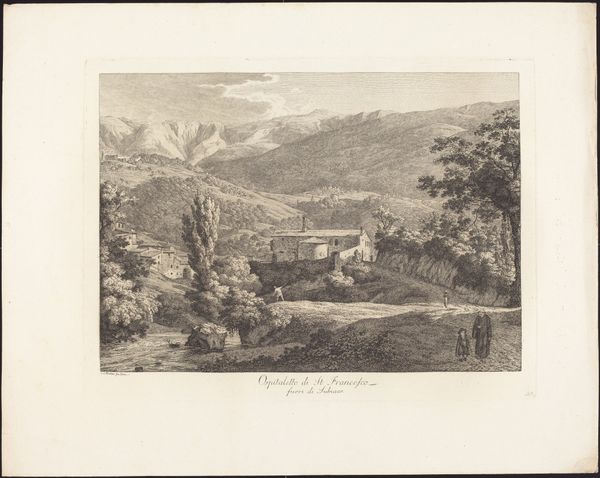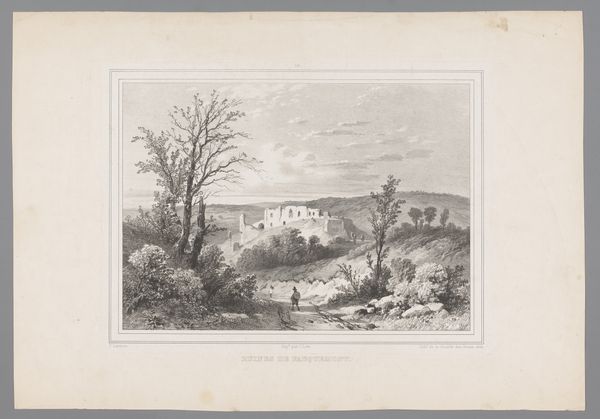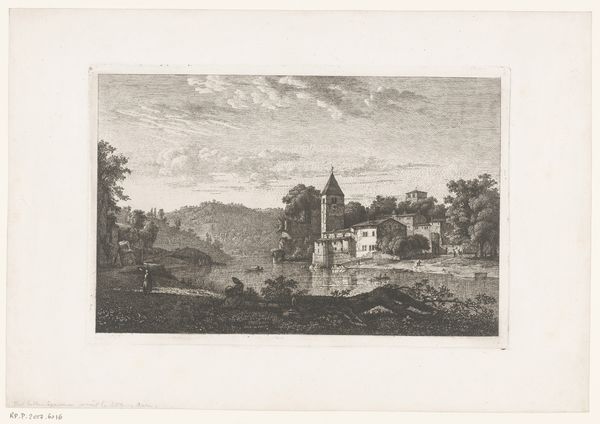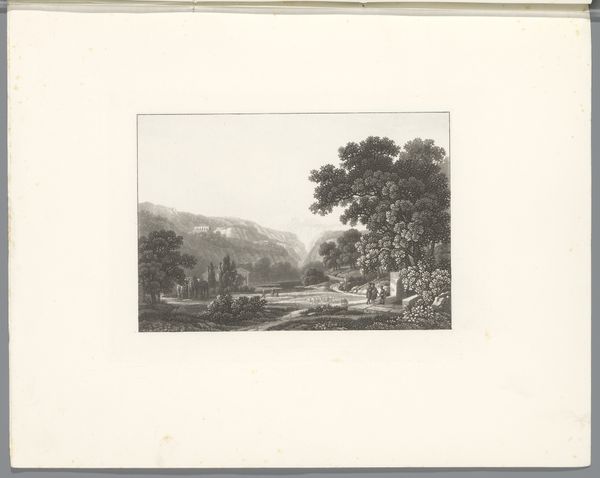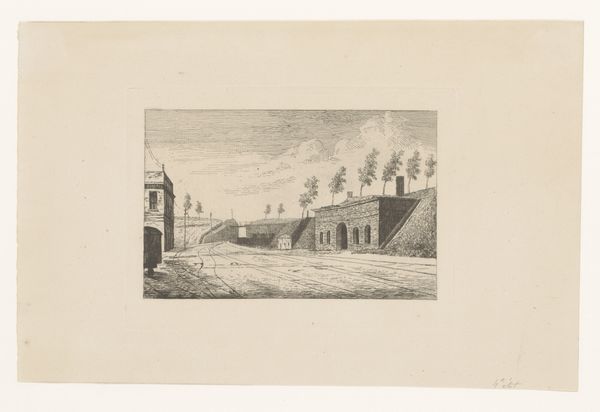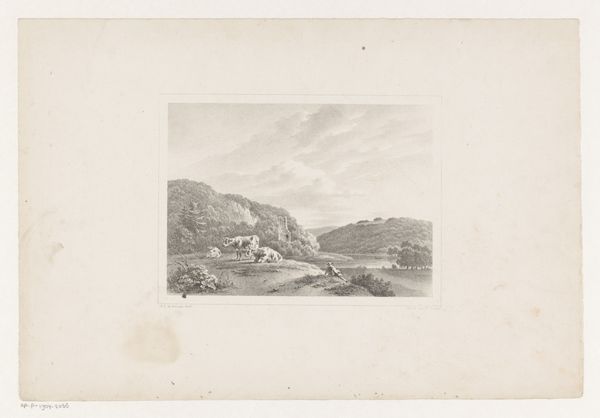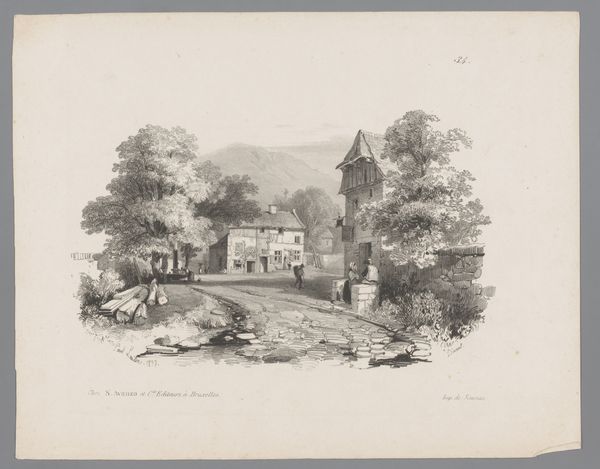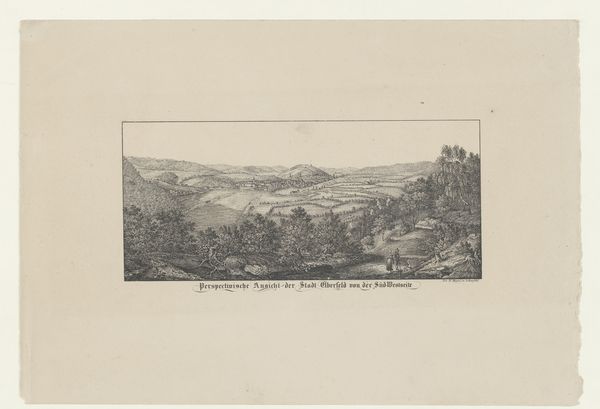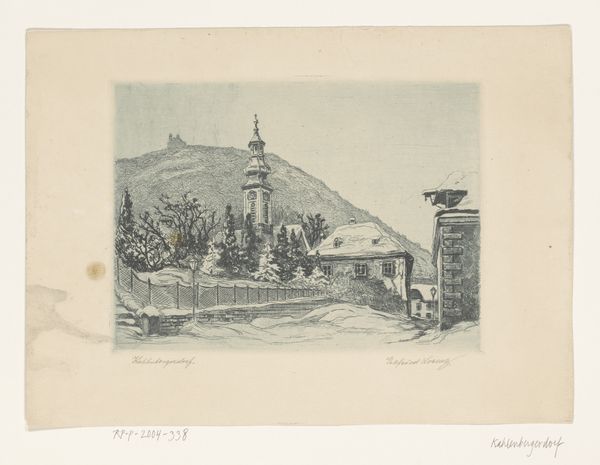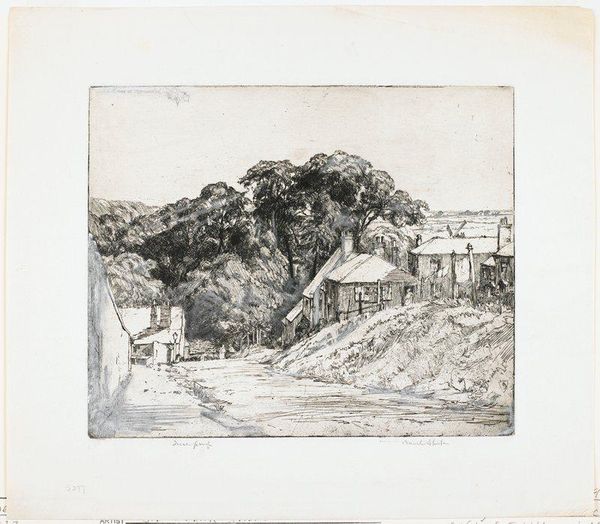
drawing, print, ink
#
pen and ink
#
drawing
#
ink drawing
#
pen drawing
# print
#
pen illustration
#
pen sketch
#
landscape
#
ink
#
romanticism
Dimensions: image: 14.1 x 19.7 cm (5 9/16 x 7 3/4 in.) sheet: 22.6 x 30.2 cm (8 7/8 x 11 7/8 in.)
Copyright: National Gallery of Art: CC0 1.0
Editor: Ernst Fries’s “The Convent Terrace,” from 1829, created using pen and ink, feels incredibly serene. I’m drawn to the way the architecture is juxtaposed against the natural landscape. How do you see this piece in a broader historical context? Curator: Well, looking at “The Convent Terrace,” one can certainly appreciate its Romantic sensibility. Beyond its immediate aesthetic appeal, I think it's vital to consider how this imagery, particularly its architectural rendering of religious spaces, participated in broader cultural dialogues of the 19th century. Consider how institutions and sociopolitical currents impact this artwork. Does it represent religious retreat and sanctuary, or could it also reflect the diminishing power of the church amid rising secularism? Editor: That's a great point about the power dynamics. The positioning of the convent within the landscape, almost secondary to it, suggests a shift in importance, right? Curator: Precisely! It speaks to how art, even landscapes, became sites for negotiating shifting ideologies. How did Fries choose to represent the institution? Were these kinds of images also circulated through printmaking for a wider public and for what purpose? We also need to ask questions about who commissioned it and the intentions behind its display. What do you notice about the intended audience, for example? Editor: It’s thought-provoking to realize that something as seemingly straightforward as a landscape can be so deeply intertwined with societal changes and institutions. It certainly challenges the way I initially viewed the piece as just a pretty landscape. Curator: Indeed. Considering these power dynamics in artistic creation enriches our understanding. Hopefully, looking through this critical lens, we gain a far more nuanced perspective on the artist’s, and the period's, intentions. Editor: Definitely. It highlights that everything is always influenced by power and societal changes. Thanks for shedding light on it!
Comments
No comments
Be the first to comment and join the conversation on the ultimate creative platform.
